In the recent weeks, several cougars have been spotted in Bonners Ferry. Normally cougars are secretive and shy away from humans. However, in the fall and winter they tend to follow prey (especially deer) to lower elevations and often into towns.
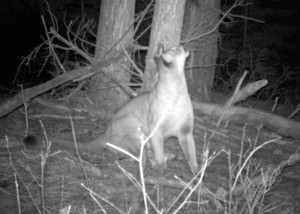
Cougars are known by more names than any other animal in the world–mountain lion, puma, painter, catamount, Mexican lion, red tiger, and panther. Sometimes their nighttime wanderings are captured on game cameras.
Additionally, young lions leave their mother’s territory when around 15 months old. These dispersing cougars are called “transients” and tend to be hungry and inexperienced. As they seek habitat unoccupied by other cougars, transients are more likely to encounter humans and prey on domestic animals (pets and livestock).
Despite their size of 80 to 265 pounds for males and 64 to 140 pounds for females, cougars are considered small cats because of the shape of their eyes, nose and feet. Additionally, they don’t roar like true large cats (like lions).
Even though they are considered a small cat, they are the largest cat in North Idaho. They can easily prey on deer, elk, and sometimes even moose. Small prey doesn’t pass by these carnivores unnoticed. Cougars eat ground squirrels, rabbits, raccoons, rodents, porcupines, beavers, skunks and the occasional dead animal.
If prey is abundant in one area of a cougar’s territory, the cougar won’t stay in the one area for long. Instead, it will continue roaming its territory and circle back to the area. The typical adult cougar travels four to five miles each night. Some males travel up to 20 miles per night while females with kittens may only travel a few miles.
Cougars tend to use paths of least resistance like trails and dirt roads when traveling and hunt when under cover. While they are most active at dusk and dawn they may travel during the day–when we are most likely to see them.
Dogs tend to smell, see and hear cougars sooner than people, so they are a good early warning system for a nearby cougar.
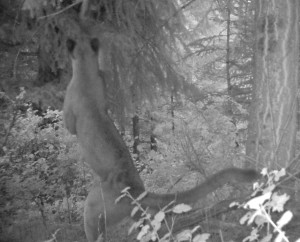
Large eyes and sharp vision help cougars hunt at night. During the day, cougars can see as well as people but at night their vision is six times more sensitive.
If you encounter a curious or aggressive cougar, convince the cougar you are a threat not prey. Yell and make lots of noise. Try to appear large by holding a jacket above your head or raising your arms high. Gather together if you are in a group.
If small children are present, immediately pick them up. Try not to bend over to pick up children or any objects because then you look more like four-legged prey. Cougars are attracted to small children because of their erratic movements, small size and high-pitched voices.
Most importantly, don’t run. Running triggers the cougar’s instinct to chase prey. Cougars can sprint at speeds of up to 50 mph, run at 10 mph for several miles and bound up to 40 feet while running. Instead, slowly back away with your eyes on the cougar and don’t turn your back.
Never move closer to the cougar and make sure you give the cougar a way to escape. Cougars can climb over a 12 foot fence and leap 18 feet up a tree.
Cougars rarely attack but arm yourself in case. Bear spray works on deterring cougars. If you don’t have bear spray, use whatever you have–a stick, rock, walking stick, or backpack–to fight back. Try to remain standing and hit the cougar until it leaves. Cougars will abandon prey that doesn’t easily succumb but they do lock in on prey for several minutes so fight back as long as you can.
Cougar encounters are rare and attacks even more rare. However, cougars don’t hibernate like bears so we have to be aware of them year-round.

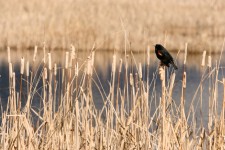
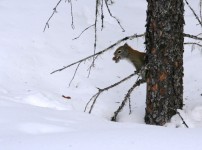
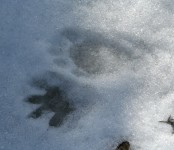
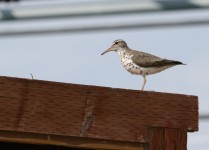
Very cool